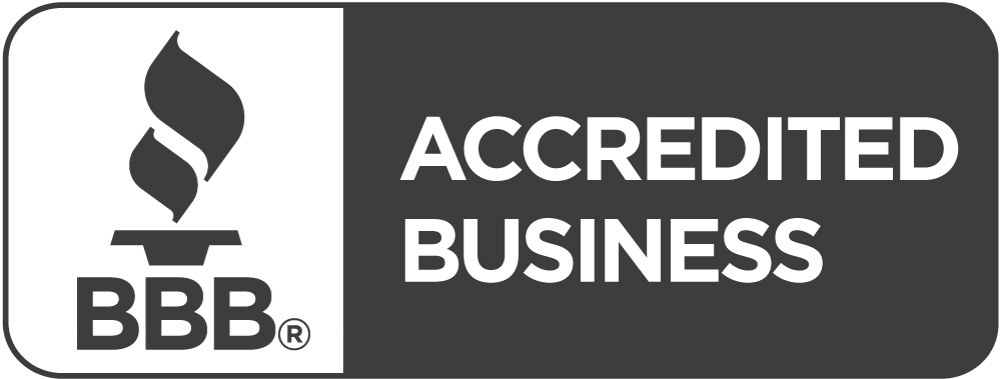Establishing a good patient intake process ensures smooth business operations. Check out our helpful guide to understanding the patient intake process.

Patient intake refers to the initial steps a medical facility takes when admitting new and returning patients for care and is a very important step in the admittance process.
Not only is it a highly influential factor in a medical facility’s operational, clinical, and financial success, but it’s also an integral way that a medical care provider obtains important patient information.
It’s generally a lengthy and intensive process that involves a lot of paperwork and the participation of both the patient and healthcare workers. Most often, it requires the management of several different healthcare aspects.
The intake process can be confusing and overwhelming. As such, understanding the patient intake process requires navigating the ins and outs of each operation.
What Happens During the Patient Intake Process
What is patient intake? The patient intake process officially begins when the patient first schedules an appointment with the medical office, whether through a medical office answering service or in-person.
During this phase, the receptionist will begin relaying information to the patient regarding the appointment scheduling process and what they should expect when they show up for their appointment. The rest of the intake process happens in the medical facility where the appointment takes place.
Although the patient registration process can vary slightly from establishment to establishment and patient to patient, for the most part, it will follow a series of relatively standard steps, depending on whether the patient is a first-time or repeat visitor.
First-Time Patients
For patients visiting a medical facility for the first time, the intake process can be especially intense. There’s a lot of information the healthcare provider will need to collect before the patient meeting with the doctor like:
- Mailing address and phone number
- Email address
- Personal and family medical history
- Social history
- Insurance information
- Signed consent forms
When the first-time patient arrives at the medical facility, they’ll be taken through the following steps before their appointment begins:
- Sign-in – The new patient will first sign in with the receptionist or intake coordinator, which begins the in-person phase of the intake process.
- Fill out forms – First-time patients will be given a battery of forms to fill out, including the patient intake form. These forms will ask for information regarding the patient’s medical history, family medical history, demographic information, insurance information, and the like.
- Sign consent forms – The first-time patient will also need to review and sign any relevant consent forms before meeting with the doctor.
After the patient has filled out all of the necessary forms, they’ll return the forms to the receptionist or intake coordinator and wait to be called in for their appointment.
At this point, it’s the responsibility of the receptionist to review the forms and transcribe the information into the facility’s database.
Repeat Patients
For repeat patients, the intake process is less time-consuming, mostly because there are fewer forms to fill out. Certain information should still be on file from the patient’s previous visit, but the repeat patient will still need to:
- Sign-in – Like new patients, repeat patients will sign in with the receptionist when they arrive at the medical facility
- Verify information – Although the repeat patient won’t have to fill out as many forms as new patients, they’ll still need to verify that certain information is still correct—information like their address, insurance benefits, and the like.
- Sign consent forms – If necessary, the repeat patient will have to review and sign relevant consent forms.
For both new and returning patients, the receptionist will also accept payment or make payment arrangements with the patient.
The Role of Patient Intake Coordinators
A key player in the patient intake process is the patient intake coordinator. With the right person in the position, the patient intake coordinator can hasten and simplify the intake process for both the patient and the medical facility.
So, what does a patient coordinator do? Patient intake coordinators manage the registration process from start to finish. They know how to ensure HIPAA compliance and perform an array of important duties, such as:
- Greet and register patients – Patient intake coordinators are among the first representatives of a medical facility that patients interact with, making them the unofficial face of the institution. They welcome patients to the facility and guide them through the registration process, assisting in the completion of intake paperwork.
- Verify patient information – The intake coordinator is responsible for verifying the accuracy and completion of patient information like insurance coverage and demographic information.
- Schedule appointments – In many cases, intake specialists are also responsible for scheduling the intake appointment, whether these are consultations or follow-up visits.
- Address questions and concerns – Intake coordinators meet with patients to answer any questions the patient may have about their health condition or appointment.
- Perform administrative and clerical tasks – Intake coordinators may also perform administrative tasks such as transcribing patient information from intake forms into the health care facility’s database and managing patient record files.
Because they perform such a vital, front-facing role, intake coordinators must possess extremely refined organizational and interpersonal skills. As they are welcoming patients and setting them at ease, they must also be highly attuned to detail and knowledgeable of all aspects of health care.
Improving the Patient Intake Process
When you factor in the amount of paperwork and time involved in the patient intake process from start to finish, you can see why it’s such a labor-intensive endeavor—for the health care facility and the patient.
It also leaves room for a lot of errors and inefficiencies. Patients are often required to fill out long patient forms that ask for the information they might not know off the top of their head, which can result in the collection of incorrect information.
And interpreting patient handwriting and parsing information for inconsistencies can put a strain on intake coordinators or other staff members, or even result in further inaccuracies.
Fortunately, there are several strategies to improve patient intake efficiency so that the process is more manageable for the patient and the practitioner.
#1 Online Scheduling
Offering your patients the option of scheduling their appointments online is one way to improve the patient intake process. It might seem like a small thing, but it can actually prove incredibly beneficial.
Online scheduling can free up time intake coordinators would normally spend working out appointment details with patients over the phone. Patients prefer it because it gives them a sense of agency, control, and convenience when it comes to their healthcare. It’s even been proven to reduce cancellations and no-shows.
#2 Switch to E-Forms
Paperwork is a big part of the traditional way of conducting the patient intake process. These days, there’s no need to rely on a handwritten paper intake form to register patients and collect their information.
Switching to online intake forms can vastly improve the patient intake process by:
- Streamlining the process – With online intake forms, patient information is instantly uploaded to a medical facility’s database or electronic health record system, making it available to all members of the healthcare team right away.
- Reducing errors – By eliminating the paper intake form, you can cut down on the number of errors that arise in collecting and inputting patient information.
- Saves time – Using online forms means the patient intake coordinator isn’t spending a significant amount of time manually inputting patient data.
#3 Automated Email, Text, and Phone Communication
Another way to improve the patient intake process is to implement text and email communication between the healthcare organization and the patient.
Sending information about upcoming appointments, follow-up instructions, or billing details via automated email, phone call, or texting services is a quick and convenient way of relaying that information to patients that’s far more time-efficient than calling in-person.
#4 Use a Patient Access Portal
Patient access portals are secure and convenient methods of gathering, storing, and accessing patient information.
Patients can use access portals to handle a variety of their healthcare needs, from scheduling appointments and refilling prescriptions to verifying their insurance and communicating with their doctor.
For healthcare workers, using a patient access portal can make your patient intake process more efficient by saving time signing up new patients and reducing the frequency of errors. It can also increase the number of patients a facility can manage.
Let Nexa Lead the Way
The patient intake process can be grueling, time-consuming, and unpleasant. Between overworked employees and confused and nervous patients, it’s a process that’s rife with opportunities for error and frustration.
Luckily, understanding what patient intake process and its complexities is the first step toward streamlining your operations. In fact, there’s a simple solution to solving your intake process issues and delivering a better experience for your patients and your staff: Nexa.
At Nexa, we offer 24/7 patient intake assistance that can expedite the process and set your patients at ease:
- Virtual reception service – Our virtual receptionists are available 24/7 to answer calls, texts, or emails whenever they come in.
- Intake process management – Our intake specialists are equipped to manage the entire intake process to your specifications.
- Real-time information delivery – We deliver patient information to you in real-time so that you’re always ready to care for your patients.
Let Nexa handle the intake process for you so that you can focus on what’s most important—your patients. There’s no reason to delay any longer. Get started with us today.
Sources
- HenryScheinSolutionsHub.com. Perfect Patient Intake.
- Zippia.com. What Does an Intake Coordinator Do? https://www.zippia.com/intake-coordinator-jobs/what-does-an-intake-coordinator-do/
- Advadm.com. 5 Key Ways to Improve Your Patient Intake Process. https://www.advadm.com/5-key-ways-improve-patient-intake-process/
- Accessefm.com. Patient Intake Process: 4 Ways to Improve Patient Satisfaction. https://www.accessefm.com/blog/patient-intake-process-4-ways-to-improve-patient-satisfaction
- Selecthub.com. What is a Patient Portal? Benefits, Features, and Selection. https://www.selecthub.com/medical-software/what-is-patient-portal-how-help-medical-practic









































































